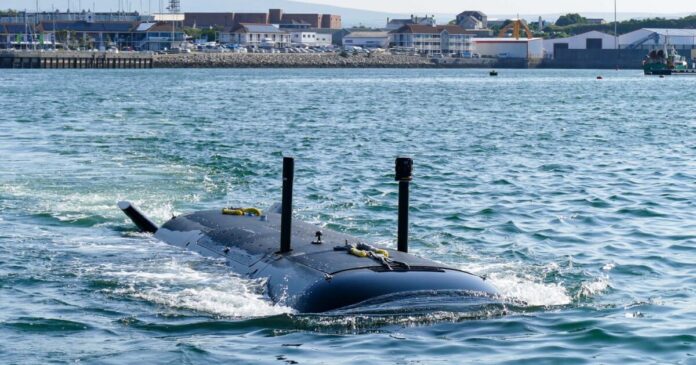Why have just one technological breakthrough when you can have two at the same time? The Royal Navy has installed for the first time a quantum clock into its XV Excalibur robotic submarine for extended precise underwater navigation.
Many of the world’s major navies are moving towards incorporating autonomous uncrewed submarines into their fleets. The reasons for this are varied, but they include the need for force multipliers, a desire for a much larger oceanic surveillance web, patrolling larger areas at longer distances from base, taking on hazardous missions without endangering sailors or a US$2-billion boat, and freeing up conventional submarines from routine tasks.
Uncrewed submarines bring many advantages to the table. They are cheaper to build and operate, relatively expendable compared to a crewed vessel, much more compact because they don’t need crew spaces or life support systems, and they are only limited by their power supply. So, if an autonomous sub was nuclear powered, it could theoretically remain submerged from commissioning to decommissioning.
However, there is one snag to the idea of an ever-submerged submarine – navigation. Today, almost all ships rely on GPS or some variant for finding their way. Unfortunately, submarines can’t receive GPS signals while submerged (or access to most other navigational fixes, for that matter), so they use an Inertial Navigation System (INS). This uses a set of gyroscopes that are similar to the accelerometers in a smart phone. Along with an accurate clock, these measure the direction and amount of any change in course or speed by the submarine. By using this with a bit of dead reckoning, a Captain can figure out where his boat is at any time.
So what is the problem? It’s something called drift accumulation. Because chronometers and gyroscopes are only so accurate, tiny errors begin to creep in and add up until the calculated position becomes more and more off until it looks like my beginner’s navigation calculation that had the sailboat inside Westminster Cathedral.
To remedy this, the Navy is experimenting with Quantum Positioning and Timing (PNT) systems based on the Infleqtion Tiqker optical atomic clock. Instead of vibrating quartz crystals, this quantum clock uses a single atom of Rubidium-87 that vibrates at a frequency 10,000 times higher than conventional microwave clocks.
Boil it down and this means the quantum clock loses only one second every 30 billion years, which, for navigation purposes, means a drift of a mere 1 x 10⁻⁶ degrees per hour. In other words, you’d need a really, really sharp pencil to mark it on the chart.
Another plus for the quantum clock is that it’s very compact, measuring only 1.6 ft³ (30 l) and weighing 66 lb (30 kg), which makes it ideal to install in a small craft like Excalibur. So far, sea trials have demonstrated its integration with the boat’s system and the accuracy of its navigational calculations. The data recovered will be shared with the US and Australia under the AUKUS treaty.
“I am delighted that our long-term collaborator Infleqtion was able to test its quantum atomic clock onboard Excalibur.” Commander Matthew Steele, Head of Futures in the Royal Navy’s Disruptive Capabilities and Technologies Office. “This experiment was a first critical step towards understanding how quantum clocks can be deployed on underwater platforms to enable precision navigation and timing in support of prolonged operations.
“The DCTO looks forward to championing further trials of quantum-based navigation technologies, such as Tiqker, onboard Excalibur as we seek to deliver quantum operational advantage for the Royal Navy.”
Source: Royal Navy


